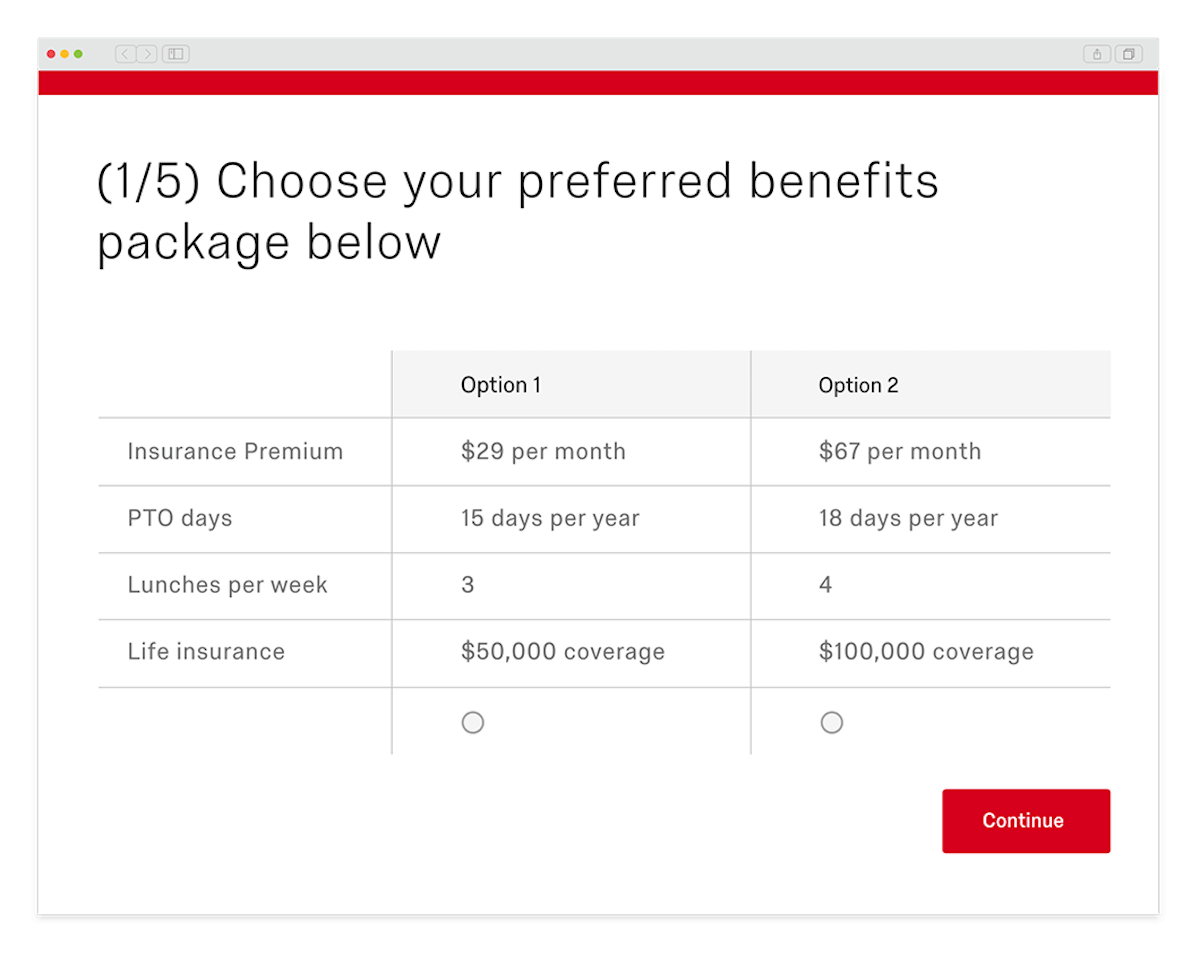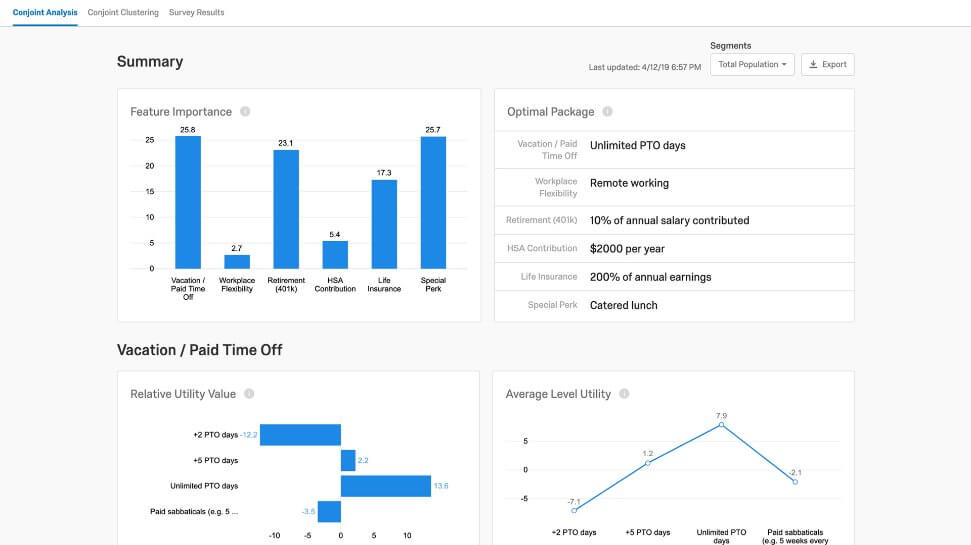What are employee benefits?
First things first, let’s define terms. Benefits are any non-wage compensation that your company offers to employees. They might include health insurance, retirement savings plans, paid time off, company socials, meals at work, and more.
Employee benefits programs are an essential part of the compensation package for many employees. Beyond just being a nice perk, they’re an important part of the employee experience, not to mention the company culture.
Most employers offer a combination of a few types of employee benefits:
Health care coverage
Healthcare for employees and their families is a very important benefit, especially in countries where healthcare is insurance-based. It may come in the form of health insurance that provides full coverage for health costs, or health savings accounts offering attractive rates. Employers may also choose to offer dental and vision plans.
Paid time off
Paid time off is another common employee benefit, and one that many employees prize very highly. It may include vacation days, sick leave and holidays (for example President’s Day).
Retirement contributions and retirement plans
Some employers will match contributions made by employees into a retirement fund. For example in the US, many employers pay into employee 401(k) retirement accounts, which allow individuals to save money while deferring taxes until they stop working.
Childcare contributions
In addition to maternity leave, adoption leave and other types of parental leave, some employers choose to support employee work-life balance by paying some of the costs of childcare.
Tuition reimbursement
Some employers pay their employees’ education fees up front as a way of supporting personal or professional development. The employee can then pay the employer back over time.
Get started with XM for People Teams today
Why are benefits so important?
Benefits are a key factor in employee engagement, recruitment and retention, and they demonstrate that the company cares about its employees. Benefits influence morale, productivity, and employee retention. In fact, they can directly impact almost every KPI of employee experience.
What’s more, these benefits can create a positive cascade, with a better employee experience driving a better customer experience, which in turn helps grow your brand.
1. Engagement
Employee benefits programs are a way for employers to show not only that they value their people, but that they recognize what’s important to them. Being known and valued in this way can help employees feel more committed to their roles and motivated to contribute to the company’s goals.
2. Intent to stay
Benefits alone may not persuade an employee to stay, but they can be an important factor that marks your company out from the competitors who want to attract your best people. If everything else is satisfactory but the benefits package feels sparse, it will be harder to retain talent.
3. Inclusion
Feeling seen and valued through benefits packages that reflect your needs and priorities can help build a sense of belonging at work, especially if you have specific needs such as family healthcare, childcare, pet insurance or other benefits.
4. Well-being
Many employee benefits are tied directly to well-being, from those that support work-life balance, such as paid time off and flexible schedules, to those that actively improve health, such as healthcare cover and gym membership subsidies.
5. Experience versus expectations
Employee benefits are an important part of the employee experience, and an area where expectations can be set and met in a very clear one-to-one way. If you offer a certain benefits package and then deliver on it, employees will know you can be trusted to make good on your commitments.

Case study: Goldman Sachs
When international finance group Goldman Sachs reviewed its employee benefits offering, its leadership decided to do things a little differently. The firm had previously used benchmarking and anecdotal feedback to shape its benefits package, which was focused on traditional financially-driven benefits like retirement savings. This time around, they asked employees what they care about most in a benefits package, and used statistical analysis to interpret the results.
By comparing each possible combination of benefits using conjoint analysis, Goldman Sachs learned something surprising – rather than caring about financial benefits, their employees were overwhelmingly in favor of family-based benefits.
Thanks to this advanced research, the company now offers a benefits package tailored to its employee’s priorities in life, including time off for family care, stipends for adoption, and what has been described as “the most generous parental leave on Wall Street.”
How should you manage your employee benefits program?
Choosing an employee benefits package should start with what your employees value most, balanced against your available budget, organizational requirements and resources. It will typically involve a trade-off between these two priorities – what they want and what you can offer.
Next, make sure all employees understand how the various types of coverage work and what they mean for them. For example, if an employee has access to several different medical plans through their employer (including one they pay into themselves), they may not be aware that those plans include different deductibles or copayments.
What about employee benefits administration? These days, most large employers use benefits administration software which allows employees to self-serve via a benefits portal or mobile app. This type of solution can also act as an automated system that reduces administrative work for your HR department. Having online or app-based HR software of this kind can also help build employee awareness of what benefits are available, since the detailed information is available on demand from an employee’s device or desktop.
It’s a good idea to review your employee benefits administration plan regularly – annually at minimum – so that it stays updated with current developments in health care legislation and market conditions, as well as keeping pace with your employees’ needs and priorities.
Benefits management best practices
1. Identify which benefits are important to your employees
Make sure your investment in employee benefits packages lines up with what will really add value for your employees. Remember that the right solution will be a careful balance between different priorities, both within the workforce and between employee and organizational goals.
2. Keep it simple, don’t overwhelm them
Make sure employees have clarity on what they are entitled to and how to claim it. If you’re using employee benefits administration software, see if you can set it up to alert employees about unused benefits or enrollment deadlines.
3. Measure results, make sure the benefits are working for you and your employees
Collecting feedback on employee benefits should be part of your employee experience program, as this will help you assess the impact of your benefits offerings, both in terms of employee experience and any impact on other business outcomes such as customer experience.
4. Be flexible and open to change
Don’t assume that what worked in the past will automatically work in future – traditional benefits may become less important to employees as working life and modern lifestyles change.
5. Keep the benefits administration process streamlined
Rather than hiring or outsourcing HR experts, look to your benefits administration software to automate the benefits administration process as much as possible. Being able to run continuous analytics on your program’s performance should help with this.
How to choose the right benefits package
Find out what employees really care about
As the Goldman Sachs case study proves, knowing what truly matters to your employees isn’t just a matter of asking a few people for their thoughts. By getting them to compare benefits and choose between options on a head-to-head basis, using a technique such as conjoint analysis, you’ll get a stronger sense of how different benefits stack up in terms of desirability, and which ones are valued more than others.
Use data to back up your decisions
Use analytics tools to measure the impact of benefits on employee engagement and retention, or compare different plans for their cost effectiveness. In some cases, you may find that it’s worth it to offer a more expensive benefits package in exchange for higher-quality employees. A tool based on conjoint analysis allows you to test a huge range of possible combinations of benefits to arrive at the package that best meets employee needs and your budget.
Tools like Benefits Optimizer allow you to run simulations so you can see the potential results of changing your employee benefits package.
Factor in data from your employee experience management program
Employee listening can add context and detail to your employee benefits management and package planning. Use your EX data to explore feedback from current and former employees about the quality of specific benefits you already have in place (such as gym facilities.)
How employee benefits help shape company culture
When you’re looking at your employee benefits program, it’s important to keep in mind not only how it will help you attract and retain top talent, but also how it can help shape your company culture.
Benefits are one of the most personal parts of any working relationship. Employees want their benefits to reflect who they are and what they need to live well at work – and companies that offer this kind of personalized care are going to stay ahead of the curve when it comes to maintaining a culture of innovation, inclusion and excellence.
Get started with XM for People Teams today
